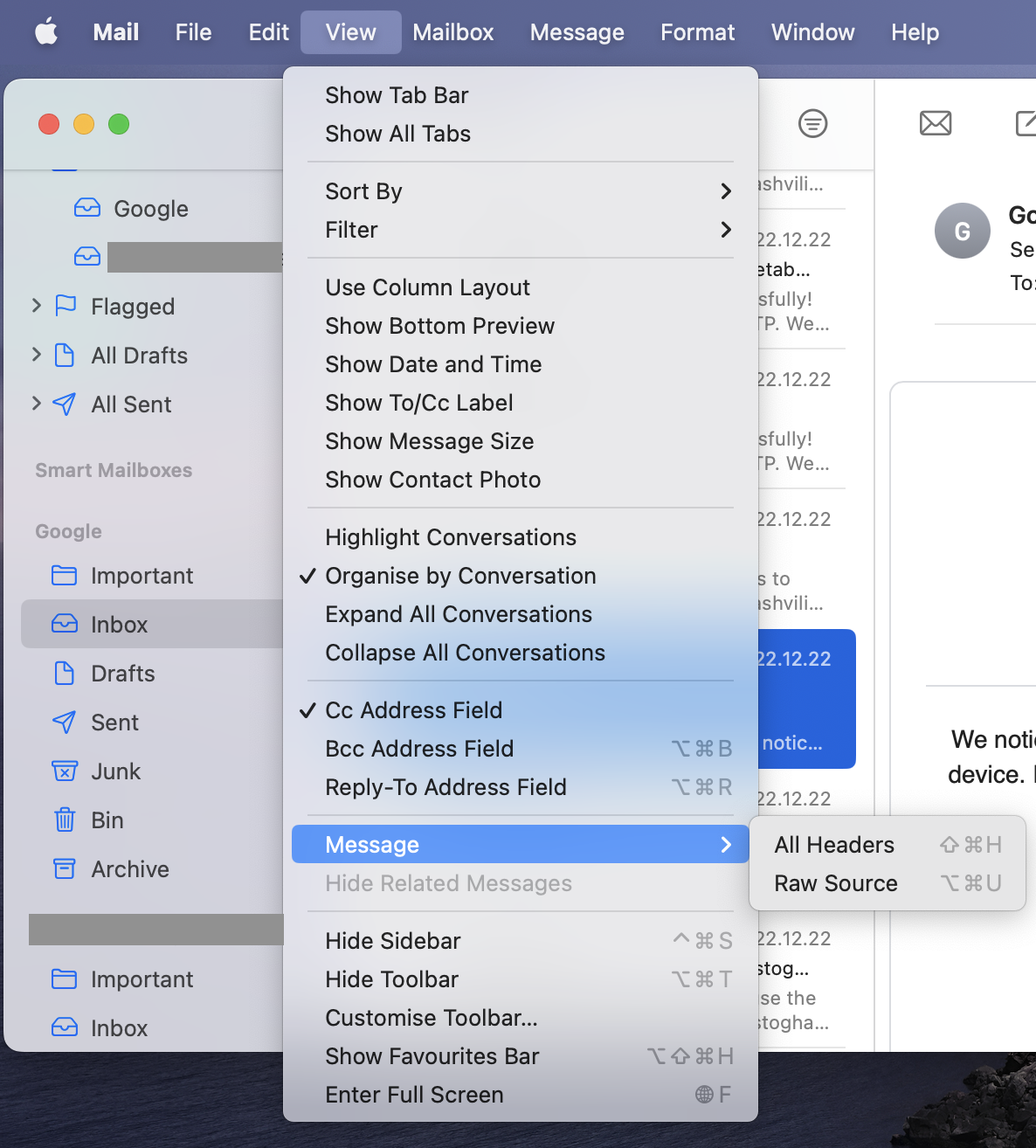Where do all those bounced emails go? Do they disappear into the black hole of the internet? Or do they come back to haunt you for eternity? 👻
Well, they do come back, but not to haunt you. Rather, to provide much-valued data about the reasons behind bounces. But, to do so, they need a place to go.
That’s when the return path email comes into play. And today, we’ll explore all the peculiarities of it.
What is return path in email?
The return path is an email header that tells SMTP servers where they should send non-delivery notifications. Typically, it’s linked to a mailbox that captures bounced emails. That way, the sender always stays in the loop and gets information about email delivery errors and the reasons behind them.
According to RFC 5321, the return path (synonymous with reverse path, MAIL FROM, or envelope from) consists of the sender’s mailbox. It is the address used in the MAIL FROM SMTP command.
So, for example, if you’re sending emails from alexthecoolguy@bestcompanyever.com address, the return path value would be something similar to this: bounce-messageID@subdomain.bestcompanyever.com.
Note: Message ID is optional and may not be included in all the return-path addresses.
It’s common to confuse return-path with a no-reply email address. However, unlike the return path, which is connected to a valid mailbox, a no-reply email address doesn’t receive any incoming emails. It’s typically used for sending emails that don’t require a reply, such as transactional emails for instance.
Also, a no-reply address is the from address associated with the sender name, for example, Microsoft Azure <azure-noreply@microsoft.com>. You can see it clearly in the from header.
Meanwhile, a return path is a hidden SMTP address, meaning that you, as a recipient, won’t see it when you view the message in your inbox. You’ll only see the sender’s email address, your email address, date, subject, mailed-by, signed-by, and security fields.

However, it’s still possible to find the return path address in your email client or email provider with a couple of extra steps.
How to view the return path in different email clients
Below we’ll detail how you can view the return path in Gmail, Microsoft Outlook, Yahoo, and Apple Mail.
Viewing the return path in Gmail
Open the email you want to inspect and press the burger menu in the top right corner. Find Show original and press it.

A new tab will open. There, use the search box to locate the return path or scroll down to find it manually.

Viewing the return path in Microsoft Outlook
To view the return path in Microsoft Outlook, you should right-click on the email you want to examine. Select View Source.

A separate window will appear. There, search for the return path or envelope from (or other synonyms) address.

If you can’t find any indications of a return path, search for the received-SPF header and a note next to it saying ‘pass (google.com: domain of bounce@notificationmail.microsoft.com designates 130.248.129.102 as permitted sender)’. The domain (bounce@notificationmail.microsoft.com) indicated in SPF will be the return path address.
In a similar way, you can view the return path for your Hotmail inbox from the Outlook app or webmail.
Viewing the return path in Yahoo
In your Yahoo inbox, open the desired email. In the top navigation panel, click on the burger menu and choose View raw message.

In the raw message tab, locate the return path at the beginning or search for it using the search tab.

Viewing the return path in Apple Mail
Finally, you can also view the return path from Apple Mail. For that, open the email and press View → Message → All headers.

In the right reading pane, scroll down to find the return path header.

With this information, you can easily check the return path for any email address, including your own.
What is Variable Envelope Return Path (VERP)?
A Variable Envelope Return Path (VERP) is a custom return path for each recipient on the email list.
You see, though you receive bounce notifications through the return path, those email messages may not contain the recipient’s address. It may say “Your message wasn’t delivered to Oliver Doe because their email address doesn’t exist”. While you get the information about the reason behind the bounce, you can’t possibly guess the email address of the contact.
Not knowing the email address means that you won’t be able to clean up the list to avoid future bounces. This will damage your sender reputation slowly and painfully.
To tackle the issue, VERP was introduced. It includes recipient’s email in the return-path address. For example, the VERP version of bounce-messageID@subdomain.bestcompanyever.com would be bounce-message+oliver.doe=example.com@subdomain.bestcompanyever.com. Since the email address should contain only one at (@) sign, it’s substituted with equals (=) sign in the recipient’s address.
This ensures that you know exactly what email address resulted in the bounce. It also facilitates automatic email bounce rate tracking.
The most common mail transfer agents (MTAs) such as Exim, Postfix, qmail, and Sendmail support VERP. Some email service providers (ESPs) also have this feature.
Why is the return path important?
Return path helps senders improve their email deliverability and successfully execute DMARC policy.
DMARC is an email authentication mechanism that allows domain owners to execute policies for message validation and reporting. In simpler words, it tells receiving mail servers how they should treat emails that fail alignment tests. To execute the DMARC policy, DKIM and/or SPF authentication should be set up.
The email servers will perform two types of checks: they will see if the email is authenticated with DKIM and/or SPF and whether the domain passes the alignment tests. According to those, either strict or relaxed policies will be enforced.
The SPF check involves querying the DNS records to verify that the mail from (a.k.a. envelope sender or return path) domain matches the from domain. In strict mode, the domains should match the DNS SPF records exactly. For example, both the return path and from addresses should have @bestcompanyever.com domains for the alignment to be successful.
The relaxed mode permits the use of suffixes and subdomains. In that case, the from domain (@bestcompanyever.com) and return path domain (@subdomain.bestcompanyever.com) without an exact match would also pass the alignment tests.
DKIM authentication involves adding signatures to email headers. Typically, the return path header isn’t part of the DKIM signature, so it won’t be checked during DKIM alignment. For more information on DMARC, watch our video.
DMARC is an essential protocol for preventing email phishing and spoofing attacks. And since a return path is necessary for SPF alignment, it helps verify the legitimacy of your email marketing campaigns or transactional emails. That way, you can avoid spam filters and improve your inbox placement.
Note: Having DMARC, SPF, and DKIM in place is now a requirement from Google and Yahoo. Use our SPF Record Checker to verify your SPF syntax and authorized senders, our DKIM Record Checker to confirm your DKIM public key is published correctly, and our DMARC Record Checker to validate your domain’s DMARC policy and protect against spoofing.
One thing to consider is that the return path address can also be spoofed, but such an occurrence is quite rare. In that case, the email wouldn’t pass the email authentication processes. It would fail SPF alignment.
How does the return path work?
It’s easy to assume that senders insert a custom or default return path at the beginning of the SMTP session i.e. when sending the MAIL FROM command. However, according to RFC 5321, the delivery SMTP inserts the return path line when it takes the message outside the SMTP environment (delivers it to the recipient or another mail system).
Keep in mind that there should only be one return path. That’s why relay servers and gateway systems are allowed to remove the existing return path and rebuild the MAIL command.
When the emails result in a soft or hard bounce, the mail servers will send email notifications to the bounce address. These email receipts may be separate for all the failed deliveries or unified in a single message.
It’s mandatory to use the return path as the destination for the delivery failure notifications. Therefore, there’s no such thing as an email with no return path. If you’re using a free account to send emails, most likely, the return path will be the same as your sending address.
How to create a custom return path
Some email programs and email service providers allow users to create a custom return path. Typically, this process includes setting up a custom return path domain within the platform and verifying it by adding its CNAME record to the DNS. The steps vary depending on the provider, but most of them enable this step in email configurations or domain setup sections. For step-by-step instructions, we recommend inspecting the official documentation of your ESP.
A custom return path domain guarantees that SPF alignment is successful, and therefore, it’s important for email deliverability. While adding it manually gives you more flexibility, it also leaves room for error and security vulnerabilities.
In those cases, it’s much better when ESPs take care of this task themselves. Mailtrap Emal Sending, for example, adds a custom return path automatically for each of your domains/subdomains. That way, your emails pass SPF alignment and Email Sending gets access to bounce reports. In other words, you won’t have to count each bounced email manually – you can simply view the stats in your dashboard.
Plus, the custom return path inserted by Mailtrap includes a unique message ID to avoid any possible discrepancies in data.

Email Sending is an email infrastructure that allows you to reach your recipients’ inboxes quickly and successfully. You can integrate it with your app using RESTful API or SMTP service. The platform enables you to send high volumes of emails and monitor the performance of the infrastructure with actionable analytics. Email Sending is part of Mailtrap Email Delivery Platform.
Email Testing is another portion of Mailtrap. It’s a safe staging environment to inspect and debug emails. With this solution, you can easily validate HTML/CSS, check the spam score for reputation monitoring, preview the emails on different devices, automate testing workflows, and view the information about SMTP transactions. For more on the features of Email Testing, have a look at the getting started guide.
Key takeaways
- Return path email captures all the non-delivery notifications;
- It is an important component in email deliverability and DMARC email validation;
- While it’s a hidden header, it’s possible to view return path in the raw data of your emails;
- Return path line is added by the delivery SMTP server;
- It’s recommended to use a custom return path address to ensure SPF alignment is successful;
- A properly-configured return path will help you avoid spam filters.



